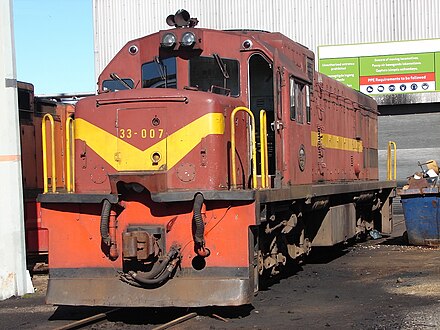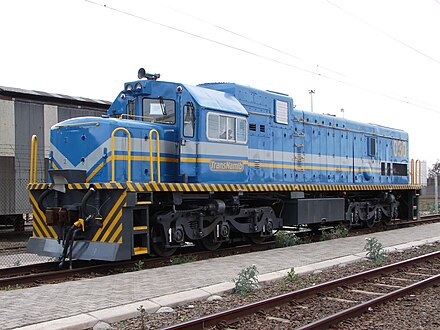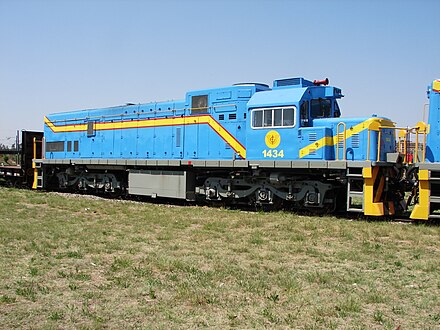| South African Class 33-000 | |||||||||||||||||||||||||||||||||||||||||||||||||||||||||||||||||||||||||||||
|---|---|---|---|---|---|---|---|---|---|---|---|---|---|---|---|---|---|---|---|---|---|---|---|---|---|---|---|---|---|---|---|---|---|---|---|---|---|---|---|---|---|---|---|---|---|---|---|---|---|---|---|---|---|---|---|---|---|---|---|---|---|---|---|---|---|---|---|---|---|---|---|---|---|---|---|---|---|
 No. 33-025 at Bellville Loco, 28 March 2009 | |||||||||||||||||||||||||||||||||||||||||||||||||||||||||||||||||||||||||||||
| |||||||||||||||||||||||||||||||||||||||||||||||||||||||||||||||||||||||||||||
| |||||||||||||||||||||||||||||||||||||||||||||||||||||||||||||||||||||||||||||
| |||||||||||||||||||||||||||||||||||||||||||||||||||||||||||||||||||||||||||||
| |||||||||||||||||||||||||||||||||||||||||||||||||||||||||||||||||||||||||||||
The South African Railways Class 33-000 of 1965 was a diesel-electric locomotive.
Contents
- Manufacturer
- Class 33 series
- Service
- In South Africa
- Outside South Africa
- Mozambique
- Democratic Republic of the Congo
- Withdrawal
- Liveries
- Works numbers
- Illustration
- References
In 1965 and 1966, the South African Railways placed sixty-five Class 33-000 General Electric type U20C diesel-electric locomotives in service. [1]





